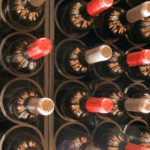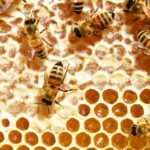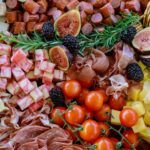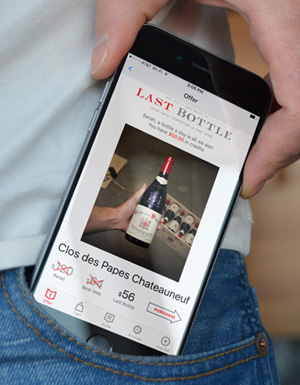Chenin Blanc has fallen in and out of favor so many times in recent history that you could be forgiven if you haven’t had the chance to try this wonderfully versatile grape.
About the grape
As the name suggests, this white grape is of French origin and has been a fixture in the Loire Valley since the ninth century. The grape ripens quite unevenly, and often requires strict hand harvesting to ensure quality. The less ripe grapes have more acid and are a perfect base for making sparkling wine. As the season prolongs, remaining clusters gain higher sugar levels and some become affected by noble rot. These are selected for the sweeter wines. The Quarts de Chaume and Bonnezeaux appellations especially are known for their dessert wines with near limitless aging potential.
Where it grows
While the Loire Valley may be Chenin’s stomping grounds, South Africa grows more of this grape than any other country. It was introduced there around 1655 and it is mostly found in the Stellenbosch and Swartland regions. Initially, the grape was used as the primary ingredient in their numerous, large, brandy production facilities.
After nearly 400 years of practice, South Africa is now producing top quality examples of these wines and there are more Chenin Blanc vines in South Africa than in the rest of the world combined. As a result, they have a number of vineyards which are able to produce excellent wine from their “old bush vines”.
These days, even the golfer, Ernie Els, has a vineyard producing wine from Chenin Blanc grapes. What does he call it? “The Big Easy”, of course. Let’s not forget about the U.S.A. either. Before the 1980’s (and the rise of Chardonnay and Sauvignon Blanc), there were large pockets of Chenin Blanc grown throughout California – particularly in the Napa Valley. At one time, the United States had more acreage of this varietal than France! Sadly, most of these grapes were pulled to make room for more “fashionable” grape varieties, although there are still isolated pockets across California.
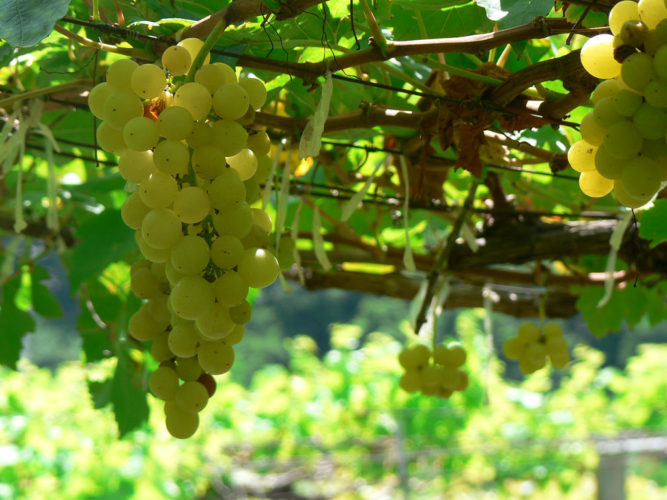
Chenin blanc grapes getting some hangtime before harvest. Photo via Flickr
Chenin Blanc can also be found in such diverse areas as the Colombia Valley, Texas High Plain, New York and Minnesota – to name a few. Since the early 2000’s, Chenin Blanc has experienced a resurgence in the USA. This is mainly due to the new generation of winemakers and hip sommeliers looking for something fresh, different, and food-friendly, to lure white wine drinkers from their predictable Pinot Grigio and Chardonnay slumber.
Styles of Chenin Blanc
Given the variety of wine styles produced from this wonderfully complex grape, the flavors and aromas of Chenin Blanc can vary greatly. Common flavors include fig, honey, apple, pear, peach, nuts, and ginger. Even when comparing two very similar Chenin Blanc wines, it is not unusual for them to exhibit quite different profiles. Some see oak aging, while others are pure stainless.
There are four basic levels of sweetness:
Sec: This bone dry, very fresh style will produce a wine that has a clean and mineral aroma. A dry Vouvray will often have so much acid it needs at least a few years to settle down and become integrated enough to enjoy. The primary flavors will be of unripe pears, a touch of ginger, and crisp apples.
Demi sec: When a little extra of the natural sugar remains, you will get a slightly smoother, dry Chenin Blanc with slightly lower acidity. The pears will be riper, the ginger flavor will be richer, and you may enjoy a little honeycomb.
Moelleux: Usually made from botrytized grapes, this style can age gracefully for decades, constantly evolving in the bottle.
Doux: The most syrupy sweet style. Think mandarins, oranges and toasted almonds, blended with peaches drenched in honey and marzipan.
Some fresh and fruity styles are made to drink well immediately. Others, such as the sweeter Vouvray and Quarts de Chaume, may be cellared for 20+ years with ease. Certainly, all well-made Chenin Blanc wines have the potential to age and it is with a little age that their complexity and richness will shine.
Food pairing
The variety of expressions allows for a huge range of pairing options.
When it comes to pairing Chenin Blanc with your favorite food, it is often the case that opposites attract. If your Chenin Blanc is young, fresh, and fruity, try something like a broccoli and goat cheese souffle or fish tacos topped with salsa.
For weightier versions with a little oak influence or added age you could turn to bolder, heartier dishes like this one pot pork chops with apples or roasted chicken with root veggies. If you’re a fan of spicy Asian food, then choose an off dry Chenin Blanc. This will bring out the best in a Thai Green Curry or some spicy fishcakes. For dessert, you can’t beat a sweet Chenin Blanc served with a Key Lime, or Lemon Meringue Pie.
Wines to try:
- Ken Forrester 2015 The FMC Chenin Blanc (Stellenbosch)
- Chappellet 2016 Signature Chenin Blanc (Napa Valley)
- Domaine Vincent Carême 2015 Le Clos (Vouvray
- Anything from Nicolas Joly
This may not be the first variety you would think to ask for when you next shop for wine, but if you try it, you will be glad that you did!
Tweet this
Chenin Blanc is the chameleon of white wines Click To Tweet At one time, the United States had more acreage of this Chenin Blanc than France! Click To Tweet
